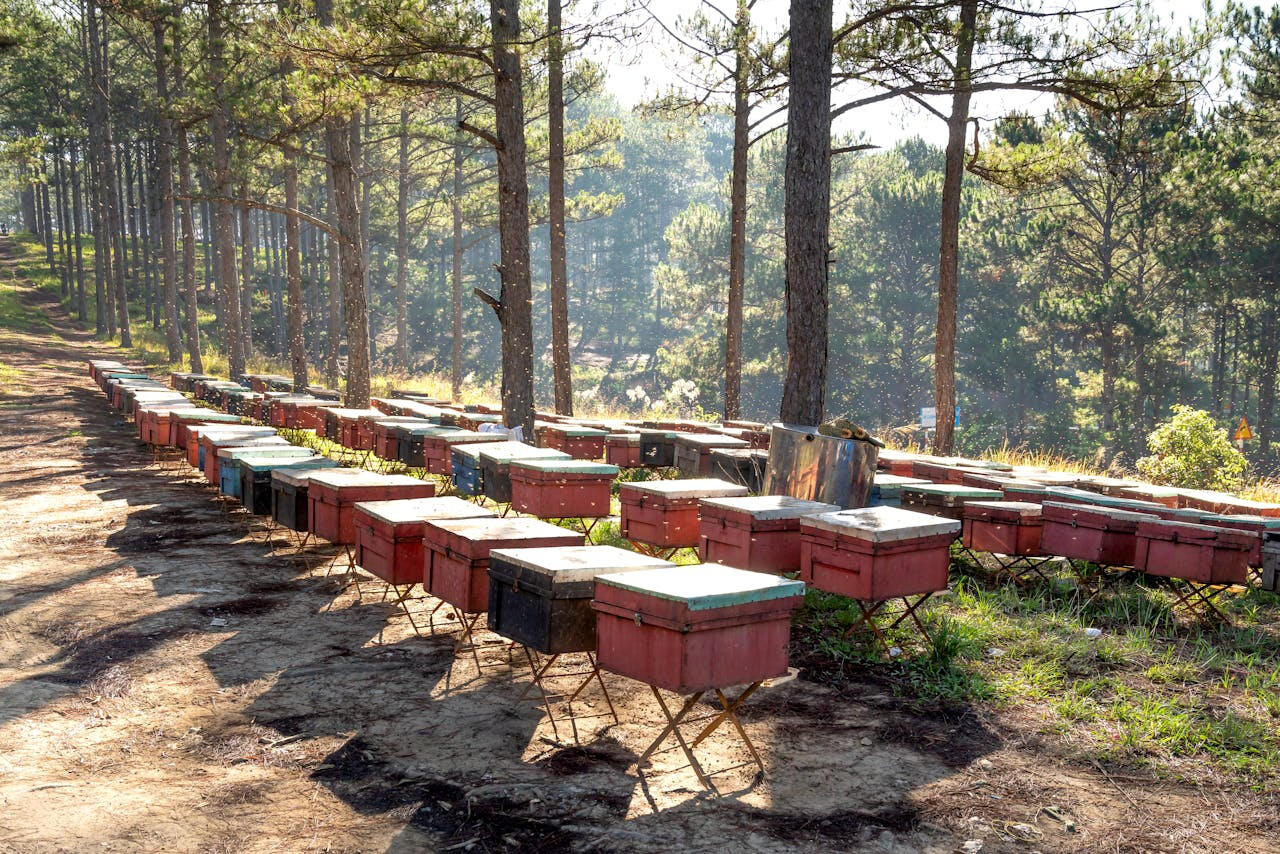About Olivia:
Olivia is a passionate writer and food critic known for her captivating reviews and insightful analysis. Her adventurous palate and keen eye for detail make her a trusted voice in the culinary world.
How To Build a Bee Box For Free?
In this tutorial, you will learn how to construct a bee box without breaking the bank. Whether you're a seasoned beekeeper or just starting out, building your own bee box can be both rewarding and cost-effective.We'll guide you through the process step by step, using easily accessible materials and simple techniques. By the end of this tutorial, you'll have a functional bee box ready to house your buzzing friends.

Materials Needed
Before you start building your bee box, gather the following materials:Scrap Wood: Look for any unused wood lying around, such as pallets, old furniture, or construction leftovers.
Nails or Screws: You'll need these to assemble the pieces of wood.
Saw: A handsaw or a power saw will work fine for cutting the wood to size.
Measuring Tape: To ensure accuracy in your measurements.
Drill (optional): If you prefer using screws instead of nails.
Paint or Stain (optional): To protect the wood from weather elements.
Once you've gathered your materials, let's move on to the construction process.Step 1: Design Your Bee Box
Decide on the dimensions of your bee box. A standard Langstroth hive size is often preferred, but you can adjust according to your needs. Here's a typical dimension for a Langstroth hive:Deep Box: 9 5/8 inches (24.45 cm) in height
Medium Box: 6 5/8 inches (16.83 cm) in height
Shallow Box: 5 3/4 inches (14.61 cm) in height
Step 2: Gather and Cut the Wood
Measure and mark the dimensions on your scrap wood using the measuring tape. Then, use the saw to cut the wood pieces to the appropriate sizes according to your design. Remember to wear safety goggles and gloves while cutting.Step 3: Assemble the Bee Box
Once you have all your pieces cut to size, it's time to assemble the bee box. You can use nails or screws to join the pieces together. If you're using nails, pre-drill holes to prevent splitting. Assemble the box according to your design, making sure everything fits snugly.Step 4: Add Frames (Optional)
If you want to include frames in your bee box, you can make them using the same scrap wood. Cut the pieces to fit inside the box and assemble them to form frames. Leave space between frames for bees to move freely.Step 5: Finishing Touches (Optional)
If you want to give your bee box a polished look and added protection, consider painting or staining it. Choose a non-toxic paint or stain that won't harm the bees. Allow the paint or stain to dry completely before placing bees inside the box.Step 6: Placement and Maintenance
Once your bee box is complete, decide on a suitable location for it in your yard or garden. Make sure it's away from direct sunlight and strong winds. Regularly inspect the box for any damage or signs of wear and tear, and make repairs as needed.
Conclusion
Building a bee box doesn't have to cost a fortune. By using scrap wood and simple tools, you can create a functional hive for your bees without breaking the bank. Follow the steps outlined in this tutorial, and soon you'll be enjoying the sweet rewards of beekeeping.Remember, bees are essential pollinators and play a crucial role in our ecosystem. By providing them with a safe and comfortable home, you're not only helping the bees thrive but also contributing to the health of our planet. Happy beekeeping!
Frequently Asked Questions (FAQ) about Building Bee Boxes
Q1: What is a bee box?
A1: A bee box, also known as a beehive or hive box, is a structure used to house honeybees. It consists of several stacked boxes where bees build their nests, store honey, and raise their brood.Q2: Why should I build a bee box?
A2: Building a bee box allows you to actively participate in beekeeping, which is crucial for pollination and the health of our ecosystems. Additionally, it can save you money compared to purchasing pre-made bee boxes.Q3: How difficult is it to build a bee box?
A3: Building a bee box can be relatively simple, especially if you have basic woodworking skills. The process involves cutting wood to size, assembling the pieces, and optionally adding frames for bee comb.Q4: What materials do I need to build a bee box?
A4: To build a bee box, you'll need scrap wood, nails or screws, a saw, measuring tape, and optionally, paint or stain for finishing.Q5: How much does it cost to build a bee box?
A5: The cost of building a bee box can vary depending on the materials you use and whether you already have some of the necessary tools. By using scrap wood and basic tools, you can build a bee box for free or at a minimal cost.Q6: What are the standard dimensions for a bee box?
A6: The standard dimensions for a bee box often follow the Langstroth hive sizes, which include deep, medium, and shallow boxes. Deep boxes are typically around 9 5/8 inches (24.45 cm) in height, medium boxes are around 6 5/8 inches (16.83 cm), and shallow boxes are around 5 3/4 inches (14.61 cm).Q7: Can I customize the design of my bee box?
A7: Yes, you can customize the design of your bee box to suit your preferences and needs. You can adjust the dimensions, add ventilation, or incorporate features such as observation windows.Q8: How do I maintain my bee box?
A8: Regular maintenance of your bee box involves inspecting it for damage, ensuring it's properly sealed, and checking for signs of disease or pests. You may also need to harvest honey and replace old comb periodically.Q9: Where should I place my bee box?
A9: Choose a location for your bee box that is sheltered from direct sunlight and strong winds. Ideally, it should be in an area with access to flowers for foraging and a water source nearby.Q10: Can I attract bees to my bee box?
A10: Yes, you can attract bees to your bee box by using bait such as pheromone lures or by placing the box in areas where bees are likely to be present, such as near flowering plants or other bee colonies.Q11: How do I know if my bee box is successful?
A11: A successful bee box will have a thriving bee population, healthy brood, and stores of honey. Regular inspections will help you monitor the health and productivity of your bee colony.Q12: Are there any regulations or permits required for keeping bees?
A12: Regulations regarding beekeeping vary by location, so it's important to check with your local authorities or beekeeping associations for any permits or regulations that may apply to you.
Want to read more about Ancient Egytpain 3D models, a guy who LOVES exploring?
